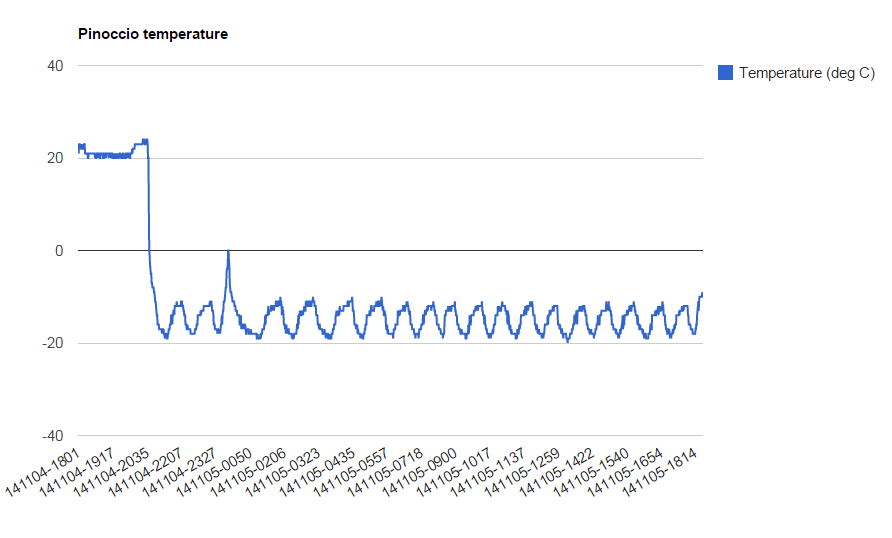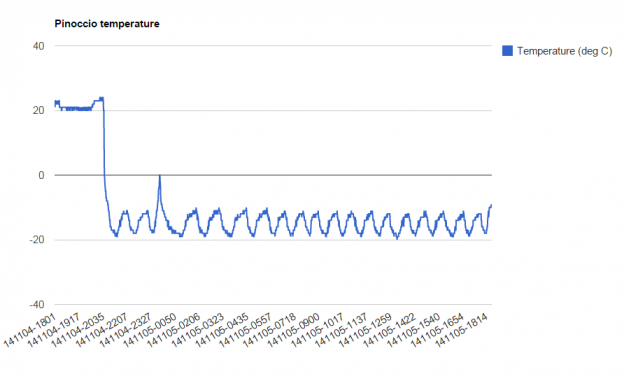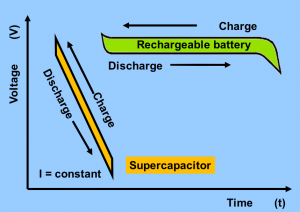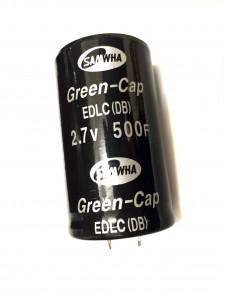My freezer has a bad habit of icing up. It’s not a great design to start with and I suspect I’m overfilling it, but I wanted to check whether it was getting down to the right temperature and also whether the defrosting cycle was running properly. A Pinoccio is an ideal thing to check this with, the only problem is Lithium batteries don’t like working in cold temperatures. At -20°C the chemistry inside the battery is finding it really tough going – after a short trip into the freezer my Pinoccio’s battery was reporting 4% even though it was fully charged moments ago.
There is an alternative though, a supercapacitor. Capacitors don’t particularly care about the cold since they don’t rely on a chemical reaction. Capacitance is simply an electric charge difference between two conductive plates that are close together. Supercapacitors with an industrial temperature rating (-40°C to 85°C) are quite common.
The downside to supercapacitors is that their voltage changes in direct proportion to their stored charge. This is unlike a battery that has a more or less constant output voltage until it is exhausted. The large swings in voltage of capacitive storage make it a bit more challenging to power electronics with:
What is needed is a voltage converter that turns a variable input voltage into a constant output voltage. I had a look at my local electronics store and came up with a TL499A IC. This is an 8 pin DIP package that only requires a handful of external components and will convert the supercap voltage into a something more stable for the Pinoccio.
As for the supercap? Well, I’m used to seeing capacitance measured in microfarads so I my eyes widened a bit when I saw the rating on this one:
500 Farads!
I made up a simple power supply circuit using the TL499A recommended layout, charged up a supercapacitor and put everything in the freezer. To save power, I created a simple Scoutscript function that sends a temperature report, sleeps for 60 seconds then calls itself again:
function templog { temperature.report; power.sleep(60000, "templog")};
Results
Once my Pinoccio had been in the freezer for a while I processed the data. To see how I made the graph check out my previous article:

Analysis
Great! My freezer (for now at least) is working as it should. It is cycling down to almost -20°C and there is a defrost cycle shortly after I started that spikes up to 0°C (at the refrigeration coils where it matters, it is likely getting several degrees warmer than this as the circulation fan doesn’t run during a defrost cycle).
What else did I learn? Well, the TL499A is a bit of a current hog. I measured a quiescent current (no load) of 2mA. The Pinoccio draws a couple of microamps in sleep state, but the TL499A’s constant 2mA power draw is enough to kill the power budget. My supercap lasted 24 hours, enough to complete the experiment but not long enough for long term monitoring.
![]()



